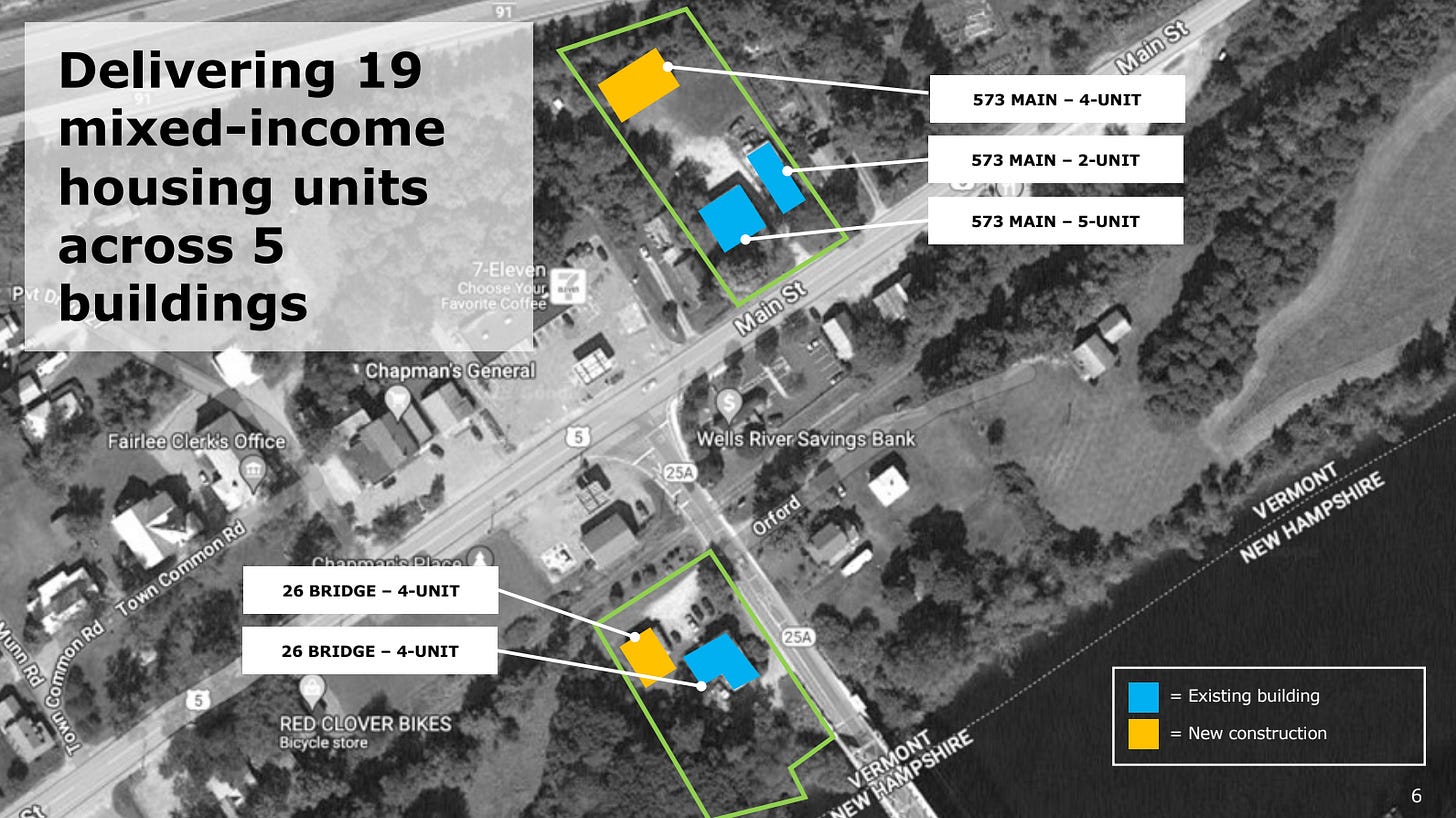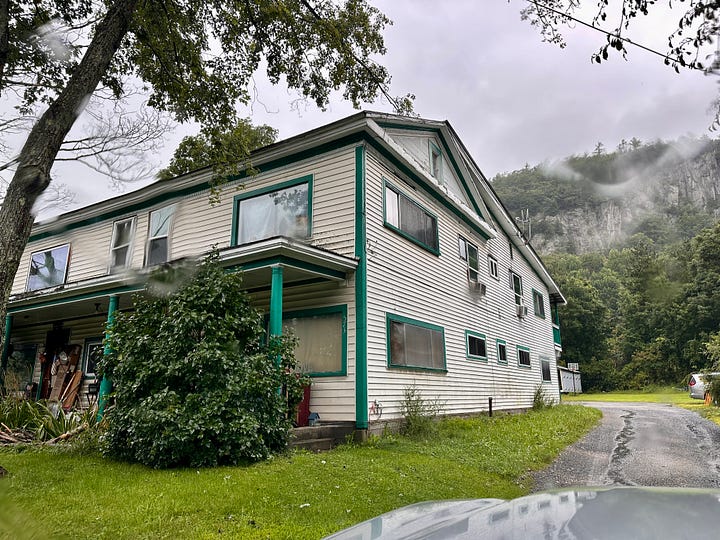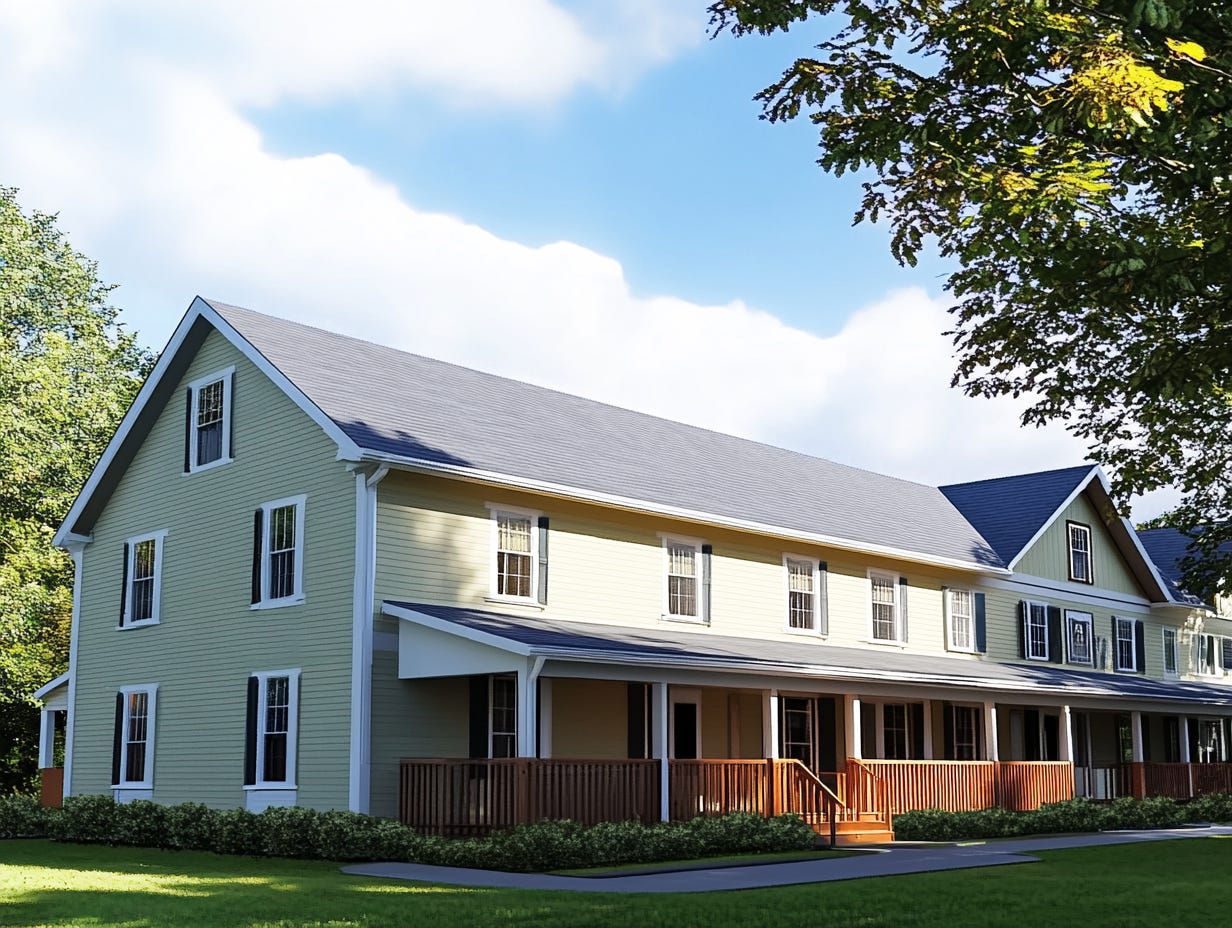David vs Goliath
Going up against the non-profit giants to bring affordable housing to rural Vermont.
Hey — Jonah here.
Welcome back to Brick + Mortar, where I share the inside stories on how we develop small-scale real estate projects at Village Ventures.
Two weeks ago, I shared a challenge I’m having with a recently completed affordable housing project.
We’re close to figuring out a solution but damned if that will slow us down!
Last I checked, we still have a shortage of quality housing.
So — the building continues.
One of the best moves I made this summer was bringing on Austin Meehan as Development Manager at Village Ventures (new website here!). His knowledge of affordable housing has been a huge boost to our momentum.
Since joining in June, Austin’s hit the ground running, helping navigate the development of our first Low-Income Housing Tax Credit (LIHTC) project — and the first of its kind in Fairlee.
This project has been in pre-development for the last four months, and we’re making real progress.
In light of my last post, I wanted to share just one of the reasons why I remain optimistic about the future of Village Ventures and our ability to deliver meaningful projects in our community.
Let’s dive in.

For those who haven’t heard of LIHTC, here’s the quick version: it’s a federal program that offers tax incentives to developers to build or rehab affordable rental housing for low-income households.
Developers get tax credits, which they sell to investors, raising capital to fund construction. This, in turn, allows us to keep rents affordable since we don’t need as much debt financing.
Simple, right?
Well, the reality is a bit more complex.
LIHTC projects require navigating a labyrinth of regulations, timelines, and funding applications. In fact, it will take us over a year from the time we started talking to program administrators until construction actually begins.
But despite the complexities, the end result is worth the effort. Plus, this would be Fairlee’s first affordable housing project.
Believe it or not — 35% of Vermont’s population lives in towns with fewer than 3,000 people. And yet, last year, these smaller towns received only 13% of the state’s total LIHTC funding.
So why the disparity?
Honestly, I think it’s less about funder bias and more about the capacity of larger affordable housing developers. These non-profits are stretched thin focusing on bigger towns, leaving smaller communities like Fairlee underserved.
That’s where Village Ventures comes in.
We see massive potential in these smaller towns. Fairlee, for example, has a high demand for affordable housing, and our local knowledge allows us to identify underutilized opportunities that larger operators might overlook.
Our secret sauce is three-fold:
We’ve got a kickass team. Between Austin, Samantha Dunn (our rockstar LIHTC consultant), and myself, we have the experience and energy to bring affordable housing projects to rural Vermont.
We know Fairlee like the back of our hand, allowing us to target sites where we can leverage LIHTC funds to not only to create affordable housing but also to reduce blight and revitalize the village center.
I co-own Réal Hazen Construction which, after just a year in operation, already has a talented team of carpenters, project managers, and support staff. This allows us to keep project costs competitive while delivering high-quality work.
So, when two properties in Fairlee’s village center came on the market, we jumped in with both feet.




We’re calling this project Bridge + Main. It involves rehabilitating 10 existing apartments across four buildings that are currently in severe disrepair.
These buildings are highly visible at the entrance to Fairlee’s village center, and frankly, they’re not giving off the greatest first impression. Years of neglect have taken their toll, with deferred maintenance leading to low morale among the tenants.
But we saw a win-win opportunity.
Our plan is to completely renovate the 10 existing units and add 9 more, all of which will be affordable in perpetuity for people earning less than 60% of the Area Median Income (AMI).
Not only will we improve the living conditions for current tenants, but we’ll also help revitalize Fairlee’s village center by adding new units, eliminating blight, and making the area more welcoming.
LIHTC projects are no joke though — they’re complicated and expensive.
Between environmental assessments, Build America, Buy America requirements, legal fees, tenant relocation, and other add-ons, we’re looking at $800k in extra expenses on a $6m development budget.
Even so, we’re coming in at $350k/unit, which is a bargain compared to a similar project in St. Johnsbury that recently closed at $450k/unit.
We’re applying to 10 different funding sources to make this happen, each with its own set of rules, stakeholders, and timelines. It’s a lot to manage, but we’re doing it!



Despite the complexity and risks (I’ve personally invested $80k of my own money just to get us to this point), I’m optimistic.
Why? Because the state has been vocal about supporting small-scale development and Fairlee is overdue for a project of this nature.
We’ve held two public hearings as part of the application process, and the support has been overwhelming. At our last hearing, 40 people showed up — that’s huge for a town of 1,000, where selectboard meetings typically draw only a handful of attendees.
The community is behind us, and there’s an undeniable need for affordable housing in Fairlee. One tenant even spoke at the hearing, sharing how the previous owner ignored requests for repairs. She’s excited to see someone finally taking action. This kind of feedback fuels our fire to keep pushing.
Still, it sometimes feels like we’re up against giants.
Established non-profit developers have teams five times the size of ours and have been doing this for decades.
But what we lack in size, we make up for in agility, creativity, and commitment to our community.
Village Ventures has grown tremendously over the last six months, and with the strong team we’ve assembled, I’m confident that we’ll continue to deliver impactful projects in the years to come.
Until next time.
— Jonah 🧱
P.S. Want to connect? Find me on LinkedIn.





I love when you share updates like this! I have read in the past that developers that have not completed lhitc deals are recommended to partner with previous winners in the state. To help bring their project to life. Have you searched for partners? If you have and not been successful why do you think this is?
Thank you for the updates. I'm excited that you'll be speaking to the town of Lyme next month about your successes and challenges.